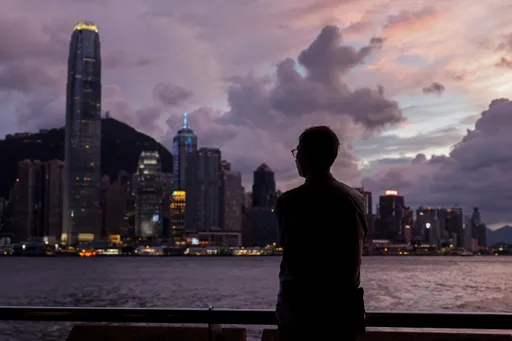Over the last few years, evidence has been piling up that Greece has been pushing back asylum seekers who enter the country before they have the opportunity to lodge an asylum claim.
Pushbacks are illegal under international law as they violate the principle of non-refoulement of refugees fleeing persecution, and a prohibition on collective expulsion.
By nature indiscriminate, Greek pushbacks are also often violent.
Greece has been employing a host of violent tactics to push refugees back in the Aegean Sea and at the Evros river crossing bordering Türkiye. Greek prime minister Kyriakos Mitsotakis has often denied having carried out such pushbacks, but there is mounting evidence of grave human rights abuses by the Greek authorities and that those measures are often lethal.
The latest investigation by the Guardian, Lighthouse Reports, Mediapart and Der Spiegel blames a Greek pushback for the death last September of two men, Sidy Keita from Ivory Coast and Didier Martial Kouamou Nana from Cameroon, who were allegedly pushed into the water after being apprehended by Greek police in the island of Samos, Greece.
Below are some of the cruel tactics used to push refugees back to Türkiye.
Intercepted and abandoned at sea
This is one of the most well-documented tactics, currently the subject of a lawsuit at the European Court of Human Rights (ECHR) filed by the NGO Legal Centre Lesvos.
The flimsy vessels used by migrants and refugees to reach Greek shores are intercepted at sea in Greek waters and towed back to Turkish waters where they are left adrift. Sometimes, as the latest investigation suggests, this happens after asylum seekers are apprehended after landing on Greek shores.
Masked men working with the Greek coastguard
In the case filed at the ECHR, a boat carrying about 200 people including 40 minors had set off from Marmaris in Türkiye to reach Italy in October 2020.
The Greek coastguard was contacted for assistance when the boat ran into difficulty due to a storm. But instead of bringing the passengers to safety, a Greek search and rescue vessel and two small patrol boats stalled the migrants’ fishing vessel for five hours, until the arrival of speed boats carrying masked men, who beat some of the passengers and forced them onto coast guard boats, where their belongings were confiscated. They were then forced onto the life rafts and left adrift in Turkish waters.
Strip searches
Migrants and refugees that have tried to reach Greece from Türkiye have often told journalists and NGOs about being subjected to humiliating strip searches. Earlier in February, twelve men were found frozen to death at the Greek-Turkish border, with photographs showing they had been stripped of their clothes and shoes.
Rounded up and beaten
Both at sea and on land, asylum seekers have often reported the use of violence during illegal pushbacks.
An Afghan national who works as an interpreter for EU border agency, Frontex, reported late last year that he was apprehended on a bus headed to the northern city of Thessaloniki alongside a group of Afghans while on a mission for the agency. According to the man’s testimony, the group was taken to a warehouse, where some of them were beaten and stripped naked before being sent to Türkiye on a dinghy across the Evros river. The Greek Ombudsman confirmed it was looking into the incident, which was brought to its attention by the border agency itself.
























